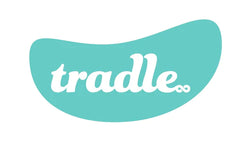The fashion industry has long been shrouded in mystery. The ‘Made in X country’ tag is the maximum amount of information we have gotten about our clothing’s history. Possibly, a brand’s website will have some generic statements about how they value sustainability and human rights … but not what they are actually doing to uphold those values. Fortunately, a shift has begun. Customers are demanding more transparency, and brands are starting to deliver.
The movement for transparency grew out of rising awareness of poor working conditions and labour abuse in textile factories. Workers themselves often do not know which brand they are working for. This hinders their ability to alert brands of exploitation by factory managers1. In addition, lack of information about where raw materials are sourced allows for flagrant human rights abuses including child labour in the cotton industry2 and modern-day slavery in spinning mills3.

Credit: Fashion Revolution
However, the transparency movement has fallen short to create the changes it was initially pushing for. There is a lack of frameworks for brands to follow which has led to self-regulation. This allows companies to highlight where they are succeeding and hide where they are failing. The pandemic has spotlighted a lack of responsibility from brands that abandoned their factory workers and refused to pay for already completed orders.
Fashion Revolution, an organization dedicated to ending human and environmental exploitation in the global fashion industry, releases an annual Fashion Transparency Index. The Index reviews fashion brands with annual revenue greater than $400 million. Its purpose is to hold brands accountable and provide information to consumers about the practices that produced their clothing. The 2020 edition made headlines when H&M, widely known for fast fashion and irresponsible practices, was deemed the “most transparent” brand in the world4. Activists responded with an outcry against this designation and worked to educate consumers that transparency does not automatically translate to sustainability.
Now, brands are being pushed more than ever to prove their transparency and sustainability all throughout their supply chain. Innovative new methods are required so that consumers can truly trust that a brand is walking their sustainable and ethical talk. This is where blockchain technology comes in. Blockchain works by linking together information in a way that is secure and unmodifiable. This can be used in fashion to link data about a garment from where the cotton was grown to where the thread was spun and who sew the pieces together. Fashion brands can now trace products throughout the entire supply chain and share that information with consumers at the point of sale to provide true accountability5.

Example of Gabriela Hearst’s scannable tags, credit: Gabriela Hearst
Eon is a pioneering blockchain company offering a software platform for assigning digital identities to garments. With a simple QR code scan, consumers can learn what a piece is made of, where it came from, who designed it, and how to care for it. Gabriela Hearst is a luxury brand that has collaborated with Eon to share information about each piece as well as its carbon footprint for its SS20 collection6. Eon has also partnered with H&M, Target, Microsoft, Waste Management, and more to work together on industry innovation.
These ID codes offer new opportunities for circular practices. Textile recycling currently faces many obstacles due to fibre blends and lack of information on materials. With a simple scan, this new technology can eliminate those barriers. The Ellen MacArthur Foundation has found that brands could retain $100 million worth of materials annually through improved recycling7.

The possibilities created with Eon’s blockchain technology, credit: Eon
The fashion industry still has a long way to go before it can be considered sustainable. But just because there is a lot of work to be done, doesn’t mean that it can’t be done. Committed leaders, along with technology and innovation are creating a new standard that puts people and the planet first.
________________________
- Transparency is in Fashion | Human Rights Watch
- Forced and Child Labour in the Cotton Industry | World Vision
- Large-scale child slavery in Indian spinning mills making yarn for international garment brands | India Committee of the Netherlands
- Transparency: The New Trend in Fashion | TechRound
- Can Blockchain Technology Make Fashion More Transparent? | Good On You
- Gabriela Hearst is giving its spring collection a digital identity | Vogue Business
- The Ambitious Plan to Publicly Track Every New Garment We Buy | Fast Company

